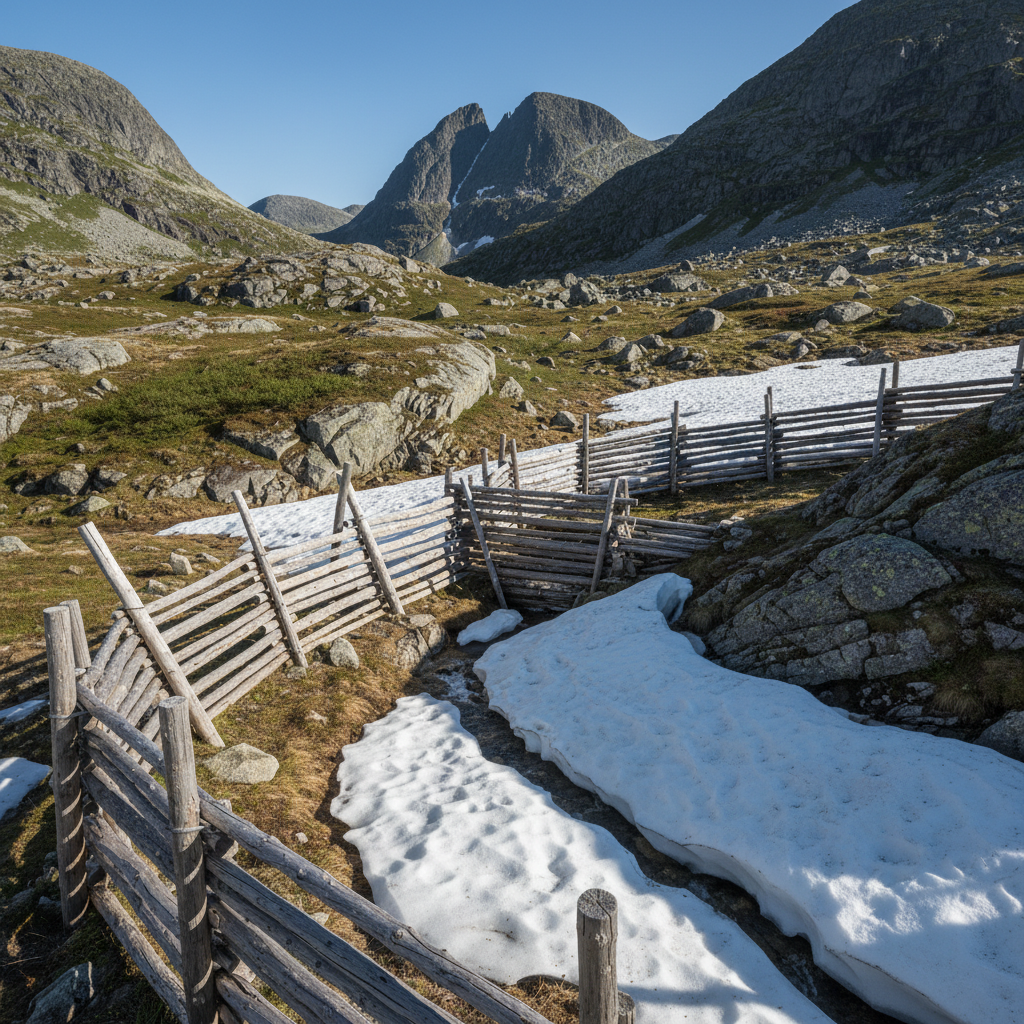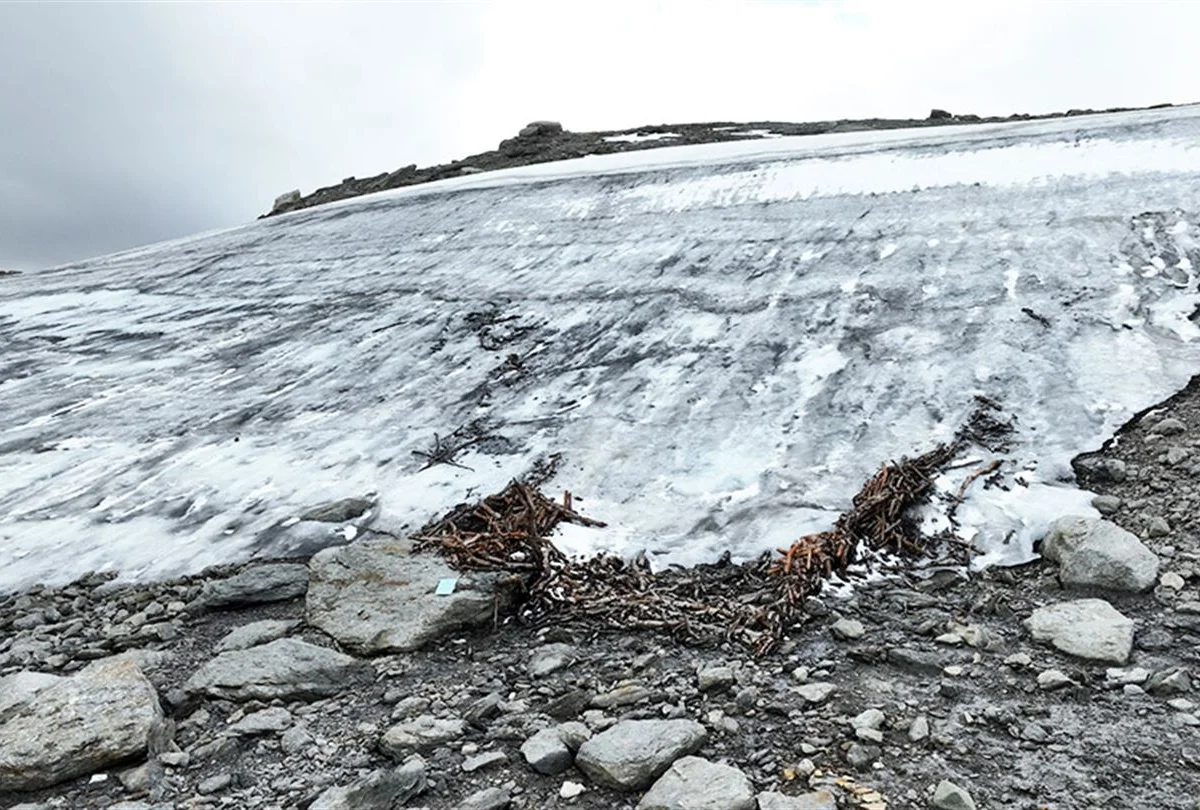
Early Iron Age Heritage Revealed by Norway’s Melting Ice Patches
Recent archaeological discoveries in Norway’s melting ice patches, particularly in Aurland, reveal remarkably preserved Early Iron Age sites.
Among them, a 6th century birch wood reindeer trap complex highlights sophisticated hunting technologies and social organization.
Ice patch archaeology uncovers organic materials crucial for understanding prehistoric subsistence and craftsmanship in northern Europe.
While climate change threatens exposed sites, it also enables new findings that deepen knowledge of human-environment interactions during this formative period in Scandinavian history.
These insights enrich our understanding of Early Iron Age Nordic communities and their adaptation strategies.
Summary
Frequently Asked Questions
Q: Historic treasures found in melting ice Norway
A: In Norway, melting glaciers and ice patches have revealed remarkable historic treasures, including well-preserved artifacts dating back thousands of years. Items such as ancient hunting tools, clothing, and even Viking-era relics have emerged, shedding light on past human activity in the region. These finds offer valuable insights into prehistoric life and help researchers understand the impact of climate change on cultural heritage. Norway's glacier archaeology is a significant area of study as warming temperatures continue to expose these hidden relics.
Q: Aurland reindeer hunting archaeological site
A: The Aurland reindeer hunting archaeological site, located in Norway, is a significant area where evidence of ancient reindeer hunting activities has been uncovered. Archaeologists have found tools, hunting pits, and other remnants that shed light on prehistoric hunting practices in the region. These findings help researchers understand how early inhabitants adapted to and utilized the mountainous environment for subsistence. The site provides valuable insights into the culture and survival strategies of ancient Nordic communities.
Q: Impact of climate change on archaeological discoveries
A: Climate change significantly affects archaeological discoveries by altering environments where artifacts and sites are found. Rising temperatures, changing precipitation patterns, and increased erosion can expose previously buried artifacts, making new discoveries possible. However, these same processes also threaten to damage or destroy archaeological sites through flooding, desertification, or coastal erosion, challenging preservation efforts. Additionally, melting glaciers and permafrost have revealed ancient human remains and tools, offering new insights into past civilizations.
Q: Artifacts from early iron age Norway
A: Artifacts from the Early Iron Age in Norway (approximately 500 BCE to 400 CE) include tools, weapons, and jewelry made primarily of iron, reflecting advances in metallurgy. Common finds are iron axes, swords, and spearheads, as well as brooches and fibulae often decorated with intricate patterns. Settlements from this period also reveal remains of farming equipment, pottery, and everyday items. These artifacts highlight a society increasingly skilled in metalworking and trade, with cultural influences from continental Europe.
Q: Preserved hunting tools found in ice
A: Preserved hunting tools found in ice provide a unique glimpse into ancient human life, as cold conditions slow decomposition and preserve organic materials like wood, bone, and sinew. One famous example is the tools discovered with Ötzi the Iceman, a 5,300-year-old mummy found in the Alps, which included a flint axe and a bow with arrows. Such frozen artifacts help researchers understand early hunting techniques, craftsmanship, and the daily survival strategies of prehistoric peoples living in harsh environments.
Key Entities
Aurland: Aurland is a municipality in Vestland County, Norway, known for its fjord landscapes and scenic natural beauty. It is highlighted in the article through the local football team Aurland FK competing in local championships.
University Museum of Bergen: The University Museum of Bergen is a cultural and scientific institution affiliated with the University of Bergen, focusing on natural history and cultural heritage. In the article, it is noted as a host for cultural and sporting events connected to the Vestland region.
Vestland County: Vestland County is a county in western Norway formed by the merger of Hordaland and Sogn og Fjordane counties. It is the regional context for the football competitions and communities discussed in the article.
Helge Titland: Helge Titland is a Norwegian individual associated with local football in Vestland County. The article mentions him in relation to coaching or administrative duties within regional football clubs.
Leif Inge Åstveit: Leif Inge Åstveit is a person involved in sports, particularly football, in Vestland County. He is referenced in the article concerning his role in organizing or managing football activities in the area.
External articles
- Norway ice melt reveals 'frozen archive' of ancient reindeer ...
- 1500-year-old wooden reindeer trap emerges from melting ...
- 1500-Year-Old Reindeer Hunting Trap Found In Norway
Articles in same category
- Georgia Man Arrested for Terroristic Threats to Shoot Up Hartsfield-Jackson Airport
- Norway’s Oil Fund Revises Ethical Investment Guidelines Amid Political Debate
- Kristian Berg Harpviken Named Director of Norwegian Nobel Institute: Shaping the Future of the Nobel Peace Prize
YouTube Video
Title: Ice Melts And Ancient Vikings Rise From Tombs in Norway!
Channel: Down The Rabbit Hole
URL: https://www.youtube.com/watch?v=fE8ZmtLYopo
Published: 7 months ago
News
